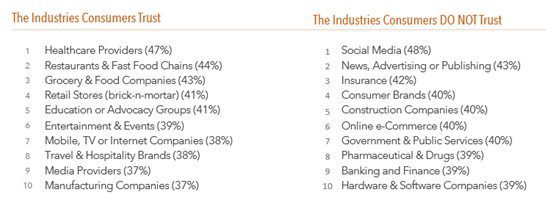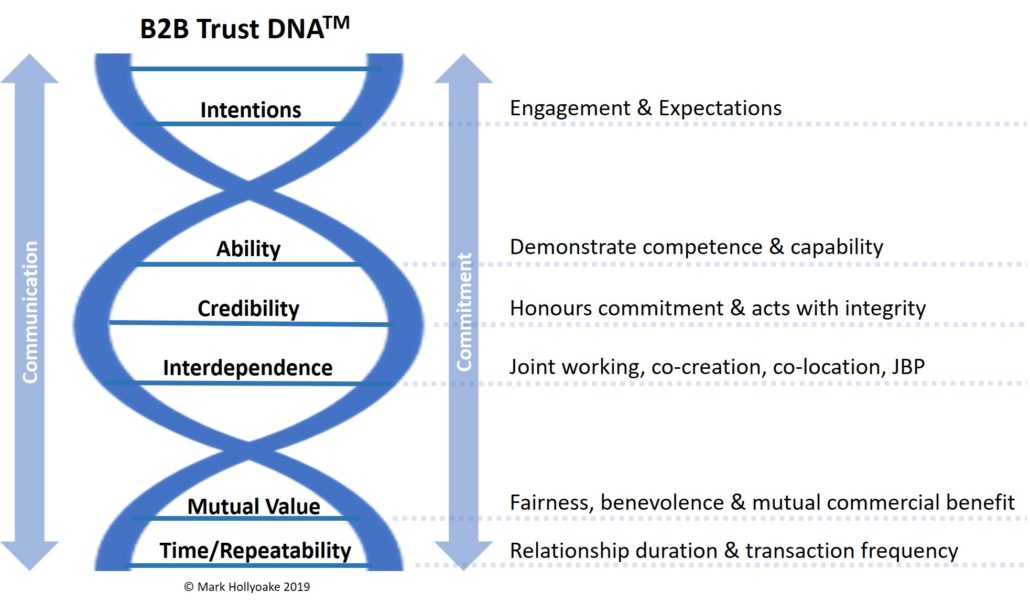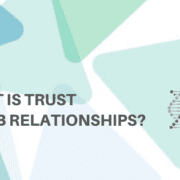Trust is not a binary on/off switch
Why building, protecting and recovering trust is a business imperative
By Peter Lavers and Mark Hollyoake
Trust is a hot topic! Here in the UK it was a major factor in our general election; the trustworthiness of new and traditional media is constantly challenged; the climate lobby are urging us to trust “the science”; high-profile companies have lost customer trust due to unethical data practices or poor market conduct; we could go on!
A lot of the commentary around these issues seems to imply that trust is binary – you can either trust an entity or not – an on/off switch in effect.
We would argue that if it’s a switch then it’s more like a dimmer switch – yes, there’s a definite ‘off’ and ‘fully on’, but there’s also a range in between.
The SAS / Futurum “Experience 2030” report addresses the compounded hot topics of trust and data protection, asking “Do you trust the following organisations to protect and not abuse your personal data?” to identify which industries had the most trust, and which were the most distrusted.
The results are fascinating:

The percentages in brackets in these tables show the proportion of respondents who said they either did or did not trust these sectors on a “do/neutral/don’t” scale, and the sectors are included on the left- or right-hand table based on the largest proportion registered. Thus, Manufacturing is in the “trusted” column even though only 37% answered positively – even fewer (18%) answered negatively for this sector (the rest were neutral).
This supports our assertion that trust isn’t an on/off switch – no single sector was rated over 50% either way!
Mark Hollyoake has spent the last five years conducting doctoral level academic research into business-to-business (B2B) trust. He researched both sides of B2B relationships at three distinct levels: senior leadership, team/operations, and interpersonal/staff. The research covered numerous business sectors, making significant new contributions to thinking and theory in this field.
He has developed a definition of B2B trust that crystalises the different constituents of trust that can affect how ‘dim or bright’ it is in the relationship:
“The willingness to be vulnerable to another party and the decision to engage in actions
based upon an understanding of their ability, credibility and the expectations
of mutual value exchange over time.”
(Hollyoake M J, 2019)
This definition underpins the Trust DNA™ model (illustrated) which operationalises trust development:

It is clear that the definition and elements of the model directly relate to the issue at hand: protecting and not abusing our personal data.
Thus, if as a company you clearly set out your intentions, and then demonstrate your abilities and credibility in an interdependent way in all your dealings and data management, you will generate mutually valuable and long-standing customer relationships. Trust will be in your business DNA!
That sounds like good business to me . . .
Intentions: What are you signalling to customers about how you will respect and manage their data? Just the minimum compliance (GDPR) or a value exchange? It is worth remembering that trust is intangible at this stage. It’s purely a promise so make sure you don’t over-promise or set expectations too high.
Ability: How good are you at customer data management, security and privacy? This is too important to just be an IT issue – customer data is a business asset (and risk). It needs to be a corporate competence and on the boardroom agenda (not lost somewhere in the IT & compliance submissions). You should also scrutinise if you are helping or hindering your customers and staff to be good data stewards, with appropriate tools, training and customer education resources to quality assure your data ecosystem.
Credibility: Are you demonstrating honesty, integrity and reliability; honouring the commitments you made in your intentions? This is particularly important if something goes wrong – it’s not the fact that it happened; it’s how it was dealt with – transparency or cover-up? The way you thereby demonstrate your values, ethics and beliefs generates trust that customers can rely on you to keep them safe and mitigate any risks.
Interdependence: Have you recognised that data is a two-way exchange, with benefits on both sides of keeping personal data accurate, relevant and safe? Foster a collaborative culture around personal data within your business (kill data silos before they kill you!). And do the same with customers to co-create and become a ‘trusted advisor’ who helps meet needs and solve problems rather than just “sell stuff”.
Mutual Value: Are you demonstrating that your understanding of customers’ needs and wants through insight and good data management is beneficial to you both? Customers won’t trust you if it comes across that you’re only in business for yourself, and that they are just a number. Treating Customers Fairly (TCF) is legislated in some countries and sectors. It shouldn’t have to be! Find ways to show appreciation and recognition of loyal, profitable customers.
Time/Repeatability: Are you building for the long-term or just obsessing about the next sale? If you are addressing the elements of the Trust DNA model above then you will foster long-standing, stable and profitable customer relationships. Your reputation for being trusted will also help attract new customers.
And don’t forget, communication acts as the relational oil for smooth trust development. Ensure your customers know what’s going on regarding how you manage and use their data, and how they can get closer to you for mutual value. Do this on a regular basis through their preferred media, and you’ll increase customer commitment – even advocacy!
Whichever business sector you are in, the SAS / Futurum “Experience 2030” report shows that there is still a lot to do to recover, build and protect trust, concluding that “Brands must leverage technology, processes, and policies in a secure, transparent manner”.
We wholeheartedly endorse this view, as it points to a data ecosystem with trust in its DNA.
Many articles and blogs only focus on the “Ability” component of trust and ignore or make assumptions about the rest. We hope this blog helps you put some structure into your thinking about how to be proactive across the whole range contained within the “dimmer switch” of trust!
Please get in touch if you would like a deeper conversation about trust, or with SAS UK to see how their tools and expertise in data management and analytics can help you turn it into competitive advantage .
This unpaid-for blog was co-authored by Peter Lavers and Mark Hollyoake, and produced as part of the SAS Collaborators Programme.
- Customer Strategy in the B2B Membership Sector - May 27, 2025
- Build a B2B Customer Strategy - May 20, 2025
- Should you implement NPS in B2B? - January 22, 2025






